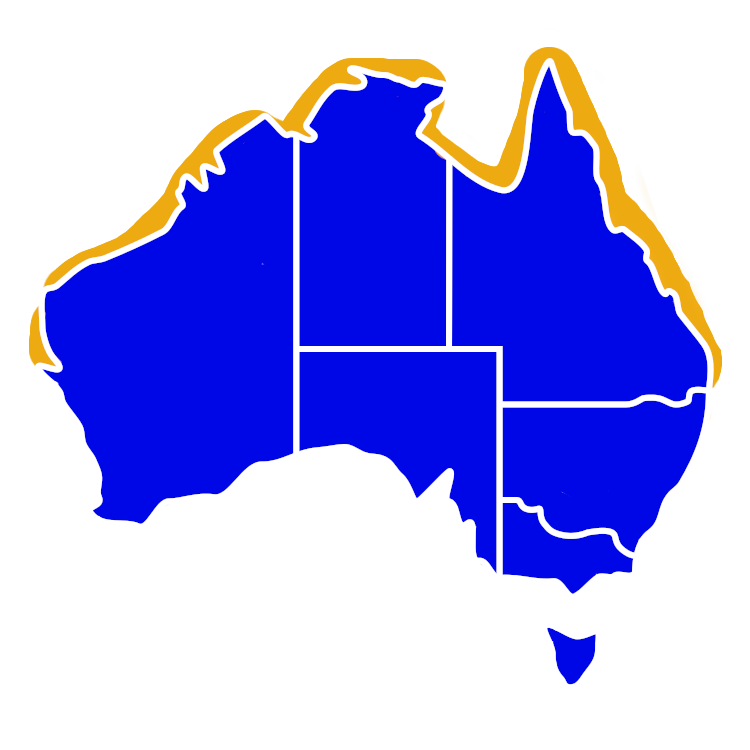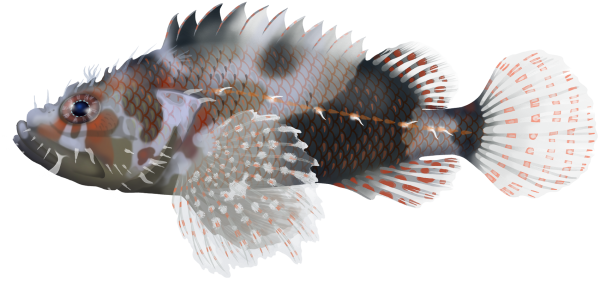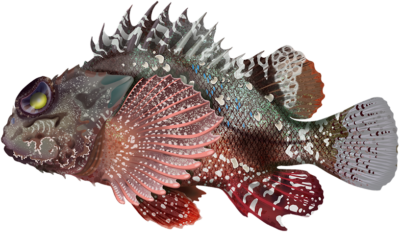Quick Facts
Distribution

Interesting Info
- Guam Scorpionfish are commonly found along the northern coast of Australia, from Western Australia, the Northern Territory, Queensland and parts of northern New South Wales.
- The Guam Scorpionfish has a unique and intricate appearance. It has a stocky body with prominent spines on its head and along its back. Its coloration can vary, but it typically has a mottled pattern with shades of brown, red, and yellow, providing excellent camouflage among coral reefs and rocky habitats.
- They are carnivorous predators that prefer to remain stationary and relies on its camouflage to ambush unsuspecting prey. It mainly feeds on small fish, crustaceans, and other invertebrates that venture close enough to be snatched up with a sudden lunge.
- Despite their venomous spines, the Guam Scorpionfish is not an aggressive species towards humans unless provoked or mishandled.
- One notable characteristic of the Guam Scorpionfish is the presence of dark spots or ocelli on their fin rays. These spots are located on the soft-rayed portion of their dorsal and anal fins. The purpose of these spots is not entirely understood, but they may play a role in intraspecific communication or as a visual deterrent to predators.
- Breeding habits of the Guam Scorpionfish are not extensively documented, but it is believed that they reproduce through external fertilisation. Spawning likely occurs during warmer months, such as spring and summer, when water temperatures are higher.
- They have a relatively long lifespan, living up to 15 years. Their average lifespan is 7 – 10 years.
Species Interaction
Recreational Fishing, Snorkeling & Diving
The Guam Scorpionfish is not typically targeted for recreational fishing. However, accidental catches may occur, especially when anglers are targeting other reef species. Outside of fishing, interaction with the Guam Scorpionfish can be enjoyed by snorkelers and divers. Due to their excellent camouflage, they can be challenging to spot, but once located, they offer a fascinating sight. However, caution should be exercised as they possess venomous spines that can cause painful stings if touched.
Scientific Classification
Kingdom: Animalia
Phylum: Chordata
Class: Actinopterygii
Order: Scorpaeniformes
Family: Scorpaenidae
Genus: Scorpaenodes
Species: Scorpaenodes Guamensis
Conservation Status
In terms of conservation status in Australia, the Guam Scorpionfish is not currently classified as endangered or threatened. However, it is important to note that certain fishing practices and habitat degradation can impact their populations.
How to catch
Guam Scorpionfish
Catch Difficulty: Intermediate
Tackle: Running Sinker Rig
Bait: Crab, Fresh cut flesh baits, Pilchards, Prawns, Squid, Worms
Technique: Keep bait close to the reef/structure
Popularity: Not targeted - Bycatch
Recreational Viewing
- Snorkeling & Scuba
Finding: Difficult
Temperament: Peaceful
Location: Inner Reef, Outer Reef, Caves, Lagoon
Danger: Venomous Spines





